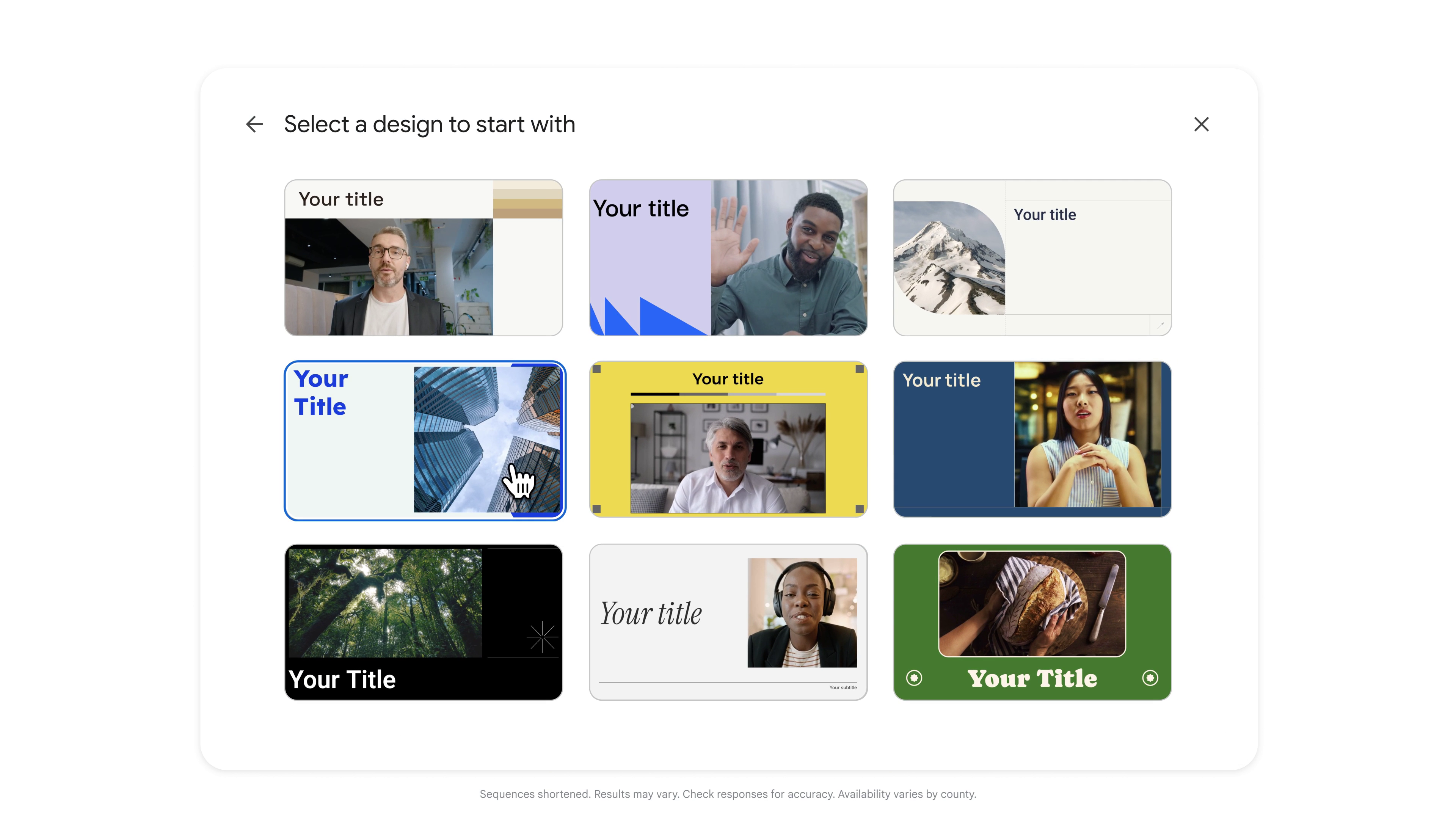Google announced its newest entry into the Workspace suite of AI-powered apps, Google Vids, in June 2024. Google Vids isn’t the text-to-video tool you might expect. After watching its introductory video, it’s clear how Google views this new tool being used. The announcement came on behalf of the Google Slides Team.
Google Vids looks more like AI-assisted Google Slides than it does a video editor. This might be exciting for some people who use Workspace for business or video production, but not so much for the average consumer. When we think of AI video, we typically think of generative AI, but could this be a handy tool for some?
Google Vids has a simple and familiar UI
Google’s demo video advertises Google Vids as a corporate presentation editor for things like product pitch videos or employee training videos. What you edit is more of a souped-up PowerPoint presentation that can be downloaded as a video or shared with a link. The primary interface looks a lot like Google Slides. The editor features a basic video timeline and tools similar to Slides for adding text, images, and videos.
As Google Vids rolls out to Workspace users, there’s a 10-minute time limit, and it only supports horizontal video content. The interface is intuitive, especially for those familiar with Google Slides. The scene-based editor allows you to edit visual and audio content in each scene, keeping you organized and able to easily re-order your scenes. The UI is heavily influenced by Slides and was developed with business users in mind.
Google Vids AI-power is mostly Gemini-based
Even though Google says Google Vids helps you create a video using AI, it doesn’t help you create the actual video content. You can’t create a video of people working in an office or using your product. The AI-powered aspects of Google Vids focus on the early stages of video production. You can use Help me create to make an editable storyboard outline, suggested scenes with suggested text, and a generated script for recording your voiceovers. All you do is enter a prompt, and Gemini does the rest.
Gemini primarily powers the AI functionality, but other processes may occur behind the scenes. You can add related files before generating your outline to improve the output quality and give the AI a better idea of the project you’re working on. You can use Gemini’s text-to-image generator, Imagen 3, inside Google Vids. The integration is seamless if you need to create an image of an asset you don’t have.
As people get more used to prompting, struggling to get the output you imagine is commonplace. If you have difficulty with your prompts, you can generate new suggested ones to get you started.
Google Vids only has minimal capabilities
After creating your video outline, you can collaborate on it in real time, like you can in Docs, Sheets, and Slides. You can add your own text, images, and music. You can also use royalty-free stock content from Google’s library. You can customize the look and feel of your video by choosing a design template, or you can create your own.
Your video storyboard outline contains several media placeholders, suggested places to add live voiceovers, and places to swap out the temporary stock video with your own. There’s also a built-in function to record video of yourself, your voice, and your computer screen using its recording studio. You can download your video as an MP4 or share it with a link when you finish.
Google Vids targets corporate users, making it look like it’s competing with Loom and similar competitors. It’s unlikely to appeal to many regular content creators, who can use basic tools like YouTube Studio to edit their videos, or more professional editing apps like Adobe Premiere or DaVinci Resolve. The recording studio features can be done with any desktop operating system (even ChromeOS used on budget Chromebooks), so the unique selling points are the Google Slides-like editing and group collaboration.
Is Google Vids destined for the Google graveyard?
Google Workspace Labs, like its regular counterpart, Google Labs, is how Google releases experimental products and features before fully adopting them. It’s been a testing ground for various features that have been integrated into its suites, but we’ve also seen several Google products discontinued over the years. Remember Google Reader, Google+, Google Hangouts, or Inbox by Gmail?
We don’t know if Google Vids will make it into the public sphere, but right now, only businesses with a Workspace subscription who have activated Workspace Labs can create a video with Google Vids. If you use Google Workspace, you can sign up for Workspace Labs to see if Google Vids is something you’re interested in. If you don’t have Google Workspace, you can get a 14-day trial, and after that, you’ll need to sign up for a one-year commitment with Google’s standard Workspace pricing to keep using it.
Is this the future of video presentations?
Could this replace slide-style business presentations? Probably not. Slides has been around forever because the format makes sense. Presenters don’t want to pause a video at the right moment and then have to scrub back if they missed their timing. Modern slide tools allow videos to be embedded, so there’s no reason to switch. Google may have been better off reserving the Google Vids name for a product better suited to it.
If you don’t have access to Google Vids, learn a few Gemini tricks to transform Google Slides presentations and get the job done in style.


